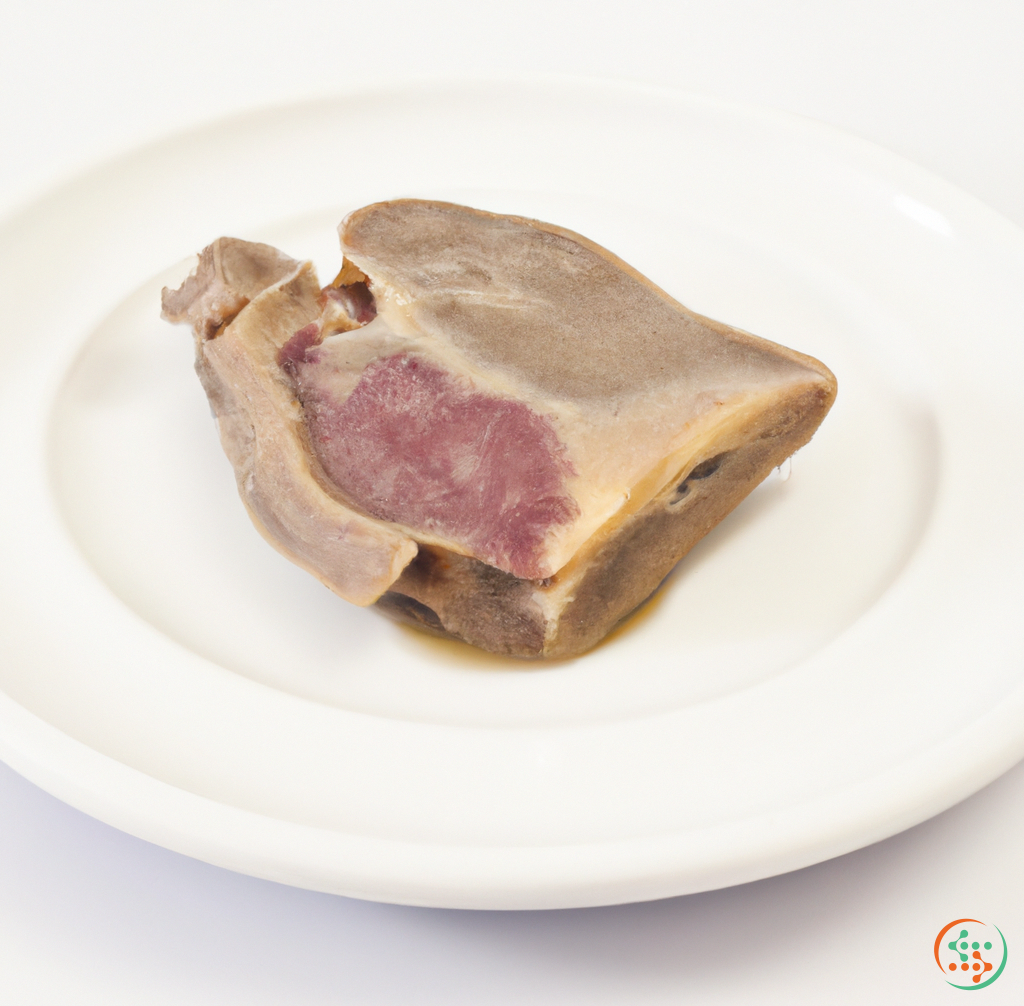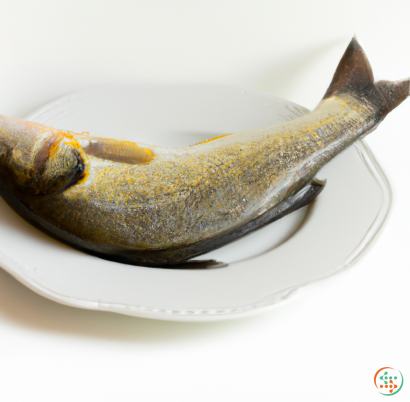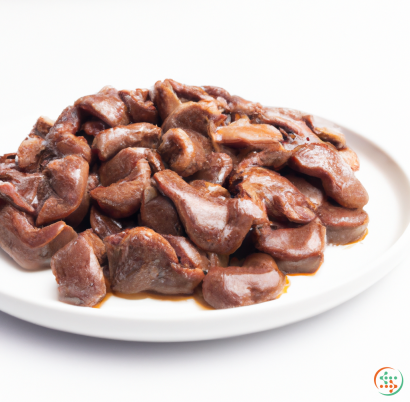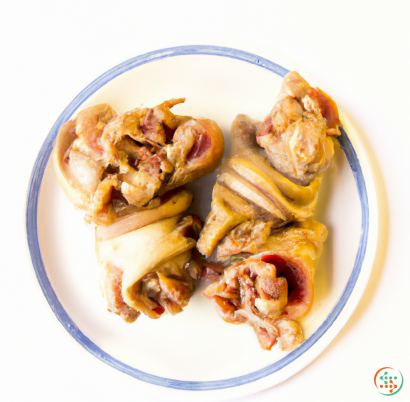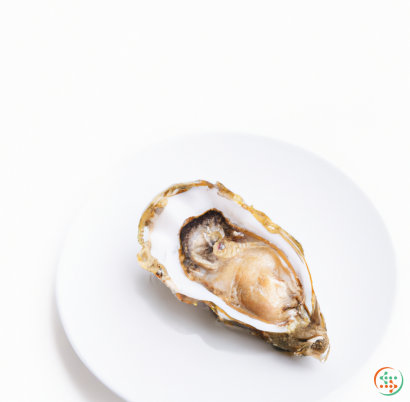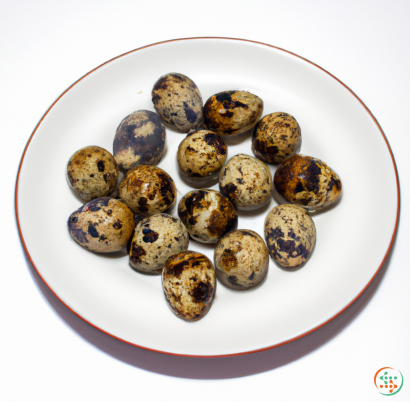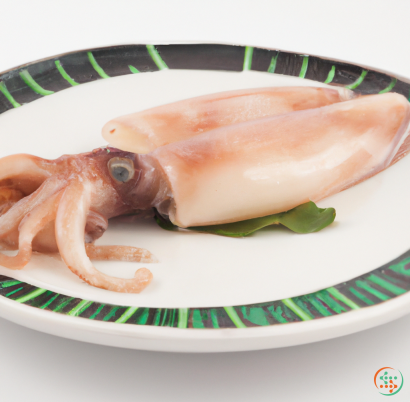Pork Tongue
, how to cook it, and some recipes
When it comes to offal, pork tongue is one of the most underrated and overlooked parts. Despite having a rather intimidating appearance, pork tongue is actually a delicacy that is often featured in many types of cuisine, including Asian and Latin American.
So what exactly is a pork tongue?
A pork tongue is essentially a part of a pig’s anatomy that includes both the tongue and the gristle and fatty tissue that attaches it to the base of the animal’s jaw. It consists of two main parts: the tongue itself and the jowl, which is the fatty tissue attached to the jaw. Pork tongues can be found in various cuts and grades, depending on where it came from.
Pork tongue is a heavily worked muscle, and as a result, it can be quite tough and chewy if not cooked properly. However, with the right preparation, pork tongue can be incredibly flavourful and enjoyable. It is a great source of essential nutrients such as protein and iron, as well as B vitamins and important oils.
The Best Way to Cook Pork Tongue
When it comes to preparing a pork tongue, the process is relatively simple.
First, you will want to bring a large pot of water to a boil and add your pork tongue. It’s important to make sure that the tongue is completely submerged. You will then want to reduce the heat and let simmer for several hours until the meat reaches a fork-tender consistency.
Once the tongue is cooked, it will need to be peeled and the fatty tissue trimmed. This is the most time consuming part of preparing pork tongue, but the results are definitely worth it.
Once it’s cleaned and prepped, there are a variety of ways to cook pork tongue. It can be boiled, steamed, braised, glazed, baked, smoked or even pickled. No matter how you choose to prepare it, pork tongue is sure to be an indulgent and meaty treat.
Pork Tongue Recipes
Pickled Pork Tongue:
Ingredients:
- 1 pork tongue
- 4 cloves garlic, minced
- 1 teaspoon sea salt
- 2 teaspoons black peppercorns
- 5 whole cloves
- 3 bay leaves
- 6 cups water
- 2 cups white wine vinegar
Instructions:
1. Place the tongue in a large pot and add the water, garlic, sea salt, peppercorns, cloves, and bay leaves and bring to a boil.
2. Reduce the heat and simmer for 2-3 hours until the tongue is fork tender.
3. Remove the tongue from the pot, and let cool.
4. Peel the tongue, and trim away any extra fat and gristle.
5. Slice the tongue into 1/4-inch thick slices and place in a jar.
6. Heat the vinegar in a saucepan until boiling, and then pour it over the tongue slices in the jar until they are completely covered.
7. Cover the jar with a lid, and let cool to room temperature.
8. Refrigerate for up to 3 weeks. Serve with crackers.
Braised Pork Tongue:
Ingredients:
- 1 pork tongue
- 2 tablespoons olive oil
- 1 onion, diced
- 2 cloves garlic, minced
- 2 cups beef broth
- 1/2 cup dry red wine
- 2 red bell peppers, sliced
- 2 tablespoons freshly chopped oregano
- 1 teaspoon smoked paprika
- 1/2 teaspoon red pepper flakes
- salt and pepper to taste
Instructions:
1. Preheat the oven to 350 degrees F.
2. Heat the olive oil in a large saucepan over medium heat. Add the onion and garlic, and cook until softened.
3. Add the beef broth, red wine, bell peppers, oregano, smoked paprika, and red pepper flakes. Simmer for about 10 minutes.
4. Place the pork tongue in the pot, cover, and transfer to the preheated oven.
5. Braise in the oven for 2-3 hours until the tongue is fork tender.
6. Remove the tongue from the pot and let cool until it can be handled.
7. Peel the tongue, slice, and serve with additional braising sauce.
Smoked Pork Tongue:
Ingredients:
- 1 pork tongue
- 2 tablespoons olive oil
- 2 cloves garlic, minced
- 2 teaspoons smoked paprika
- 2 teaspoons ground cumin
- 2 teaspoons freshly ground black pepper
- 2 teaspoons onion powder
- 1 teaspoon dried oregano
- 1 teaspoon dried thyme
- 1 teaspoon sea salt
Instructions:
1. Rub the tongue with the olive oil and garlic.
2. Coarsely grate the smoked paprika, cumin, pepper, onion powder, oregano, thyme, and salt into a small bowl, and mix together.
3. Rub the spice mixture onto the tongue, and wrap in foil.
4. Preheat the grill or smoker to 200 degrees F and place the wrapped tongue on the grate.
5. Smoke the tongue for about 6 hours until it reaches an internal temperature of 130 degrees F.
6. Let the tongue cool before peeling and slicing. Serve with your favorite BBQ sauce.
Whether you’re new to cooking offal or a seasoned veteran, pork tongue is definitely worth exploring. With the right technique and some flavorful recipes, you’ll soon be impressed with this hidden gem of the offal world. Give it a try and see just how delicious pork tongue can be!
A Journey from Farm to Plate: The Story of Pork Tongue
When it comes to humble foodstuffs, few pass the test like Pork Tongue. What might appear to be unappetizing to some, is a delicacy to many. From high-end culinary circles to street vendors, chefs have been turning hooves, heads and organs into tasty treats for centuries. The journey of pork tongue from farm to plate is a fascinating one, and the story behind this increasingly-popular menu item warrants closer inspection.
To start, let’s touch on the well-worn topic of farm-to-table in the food supply chain. There’s no real mystery here; the more steps within a food’s journey, the greater potential there is for reduced quality, higher prices and longer delivery times. Sourcing produce directly from the farmers and producers is fast becoming essential in this age of globalized, automated and interlinked food systems.
It’s just such a system which drives the production and consumption of pork tongue. Pork production is one of the highest global commodities and therefore heavily worldwide regulated. To ensure the highest-quality meat and avoid contamination from undesired animal sources, all pork products must come from specifically accredited factories.
Before we can delve any further into the story of pork tongue, it’s first important to understand the anatomy of the pig itself. The fundamentals of butchering a pig involve the separation of a series of primary and secondary cuts into eight different primal cuts (or ‘primal muscles’):
1) Shoulder
2) Loin
3) Shin, Hock and Trotter
4) Belly
5) Jowl
6) Head
7) Offal
8) Cheeks, Navel and Parts of the Neck
Once the pig has been sectioned off these cuts, the tongue is typically removed from the head and split in two, down the centre of the thick, fibrous membrane. This process requires great skill and constitutes one of the trickiest cuts of the entire process – quite a feat given the delicate nature of the tongue itself.
Of course, all parts of the pig can be eaten, but some cuts are far more valued than others - particularly the tender, firm flesh of the tongue. This is why the removal procedure is so important; it’s the difference between a great-tasting meal and an uninviting, grisly dish.
Once the tongue has been separated, the next step is to clean and condition it. This involves boiling it in a pot of clean water for a minimum of two hours. This allows the connective tissue and fat to break down and the tongue to form a nice, gelatinous texture. Once cooked and cooled, the product is ready to be transported to the butcher or market.
The journey of pork tongue doesn’t end here however, as butchers and retailers are tasked with the job of further cleaning the product before it goes on sale. Depending on the specific regulations and the commercial standards applied across their particular locations, butchers or retailers may choose to employ a process of tongue-scraping, or brining and salt-curing, prior to putting them on the shelves. Alternatively, they may opt for an easier method of soaking the tongue in a combination of herbs, spices, vinegar and onions.
Whatever the final step(s) involved in the preparation stage, Pork Tongue is eventually ready for sale and ready for use in a variety of recipes - with choucroute, fried crispy pork cheek and tongue saltimbocca just a few of the delicacies that can be easily produced with this ingredient.
Of course, before the fun part of cooking can begin the tongue must be safely delivered to the consumer.
In the modern era, the majority of food products (including pork tongue) will travel through the hands of several middle men, such as wholesalers and transporters, en route to their end destination.
The ability to package and deliver food products safely and promptly is essential. Good food safety management and temperature controls are essential when transporting any foodstuff, and pork tongue is no exception. Without suitable measures in place, freshness and quality will inevitably be compromised. However, the efficient movement of these products from farm to plate ensures that consumers receive beef tongue that is still in top condition.
And thus concludes the journey of pork tongue from farm to plate. It’s a journey which involves an intricate series of stages, combining ancient butchery techniques with advanced logistics strategies, in order to deliver meat to consumers in the most efficient and safe way.
As the demand for local, organic and ethically sourced foods continues to grow, it’s likely that pork tongue will remain a firm favourite with chefs and consumers around the world. It’s a delicious and surprisingly versatile ingredient, which when utilized correctly, can bring a wealth of flavour and texture to any dish.
| Vitamin C | 0.0017 grams | |
| Vitamin B1 | 0.32 mg | |
| Vitamin B2 | 0.51 mg | |
| Vitamin B3 | 0.00534 grams | |
| Vitamin B5 | 0.51 mg | |
| Vitamin B6 | 0.23 mg | |
| Vitamin B9 | 0.004 mg | |
| Vitamin B12 | 0.00239 mg |
| Calcium | 0.019 grams |
Daily Value 1.3 g
|
| Iron | 0.00499 grams |
Daily Value 0.018 g
|
| Magnesium | 0.02 grams |
Daily Value 0.4 g
|
| Phosphorus | 0.174 grams |
Daily Value 1.25 g
|
| Potassium | 0.237 grams |
Daily Value 4.7 g
|
| Sodium | 0.109 grams |
Daily Value 2.3 g
|
| Zinc | 0.00453 grams |
Daily Value 0.011 g
|
| Copper | 0.11 mg |
Daily Value 0.9 mg
|
| Manganese | 0.01 mg |
Daily Value 0.0023 g
|
| Selenium | 0.0155 mg |
Daily Value 0.055 mg
|
| Tryptophan | 0.278 grams | |
| Threonine | 1.018 grams | |
| Isoleucine | 1.099 grams | |
| Leucine | 1.932 grams | |
| Lysine | 1.97 grams | |
| Methionine | 0.54 grams | |
| Phenylalanine | 0.999 grams | |
| Valine | 1.253 grams | |
| Arginine | 1.488 grams | |
| Histidine | 0.605 grams | |
| Aspartic Acid | 2.24 grams | |
| Glutamic Acid | 3.035 grams | |
| Glycine | 1.781 grams |
| Total Sugars | 0.131141 grams |
per 100g
|
| Capric acid (10:0) | 0.02 grams |
|
| Lauric acid (12:0) | 0.09 grams |
|
| Myristic acid (14:0) | 0.34 grams |
|
| Palmitic acid (16:0) | 4.13 grams |
|
| Stearic acid (18:0) | 1.87 grams |
|
| Total Saturated fatty acids: | 6.45 g | |
| Oleic acid (18:1) | 7.89 grams |
|
| Palmitoleic acid (16:1) | 0.7 grams |
|
| Gadoleic acid (20:1) | 0.17 grams |
|
| Total Monounsaturated fatty acids: | 8.76 g | |
| Linolenic acid (18:3) | 0.09 grams |
|
| Linoleic acid (18:2) | 1.84 grams |
|
| Total Polyunsaturated fatty acids: | 1.93 g | |
| Cholesterol | 0.15 grams |
|
| Total Sterols: | 0.15 g | |
